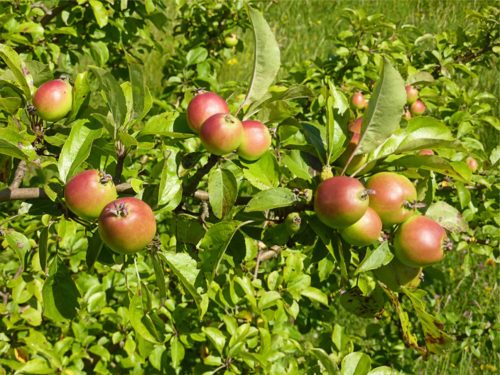- Series:Plants, Transcript English
Genesis 1:11
“And God said, Let the earth bring forth grass, the herb yielding seed, and the fruit tree yielding fruit after his kind, whose seed is in itself, upon the earth: and it was so.”
 It can be a bit bewildering, searching through a nursery, to buy a fruit tree. With some fruit trees, such as apple trees, one will often see a notice reminding you that you may need two such trees in order for there to be successful pollination. When I lived in the UK, where apple trees are a native plant, notices often stated that a crabapple tree would suffice as a pollinator for a dessert apple tree.
It can be a bit bewildering, searching through a nursery, to buy a fruit tree. With some fruit trees, such as apple trees, one will often see a notice reminding you that you may need two such trees in order for there to be successful pollination. When I lived in the UK, where apple trees are a native plant, notices often stated that a crabapple tree would suffice as a pollinator for a dessert apple tree.
Crabapples are close to the wild apple varieties. Their fruit tends to be too sour to eat, though the tiny apples make good jelly.
Once, walking by the Peak Forest Canal near Manchester, I came across an apple tree in fruit, growing wild. The apples were small, but the same shape as commercial apples, and they tasted sweeter than wild crabapples. An expert friend suggested that the tree had grown from a discarded apple core, probably thrown away by someone hiking the canal tow path.
Each of these trees were varieties of apple trees. They could easily cross pollinate. But it would not be possible to cross these apple trees with, for example, an orange tree. The trees have developed in the wild into different species and have been artificially bred in managed orchards. But they produce fruit with seed according to their kind. And that is exactly what the Bible said would happen, as it relates God’s creation of plants in Genesis 1:12 – “The earth brought forth… trees bearing fruit in which is their seed, each according to its kind.” Author: Paul F. Taylor
Prayer: Thank You, Lord, for Your provision of fruit and vegetables. Thank You for the wide varieties that You have made the Earth bring forth. Amen.
Ref: Patterson, R. (2007), The Origin of Plants, < https://answersingenesis.org/biology/plants/the-origin-of-plants/ >, accessed 5/29/2018. Image: Wild crabapples, CC BY-SA 3.0.
